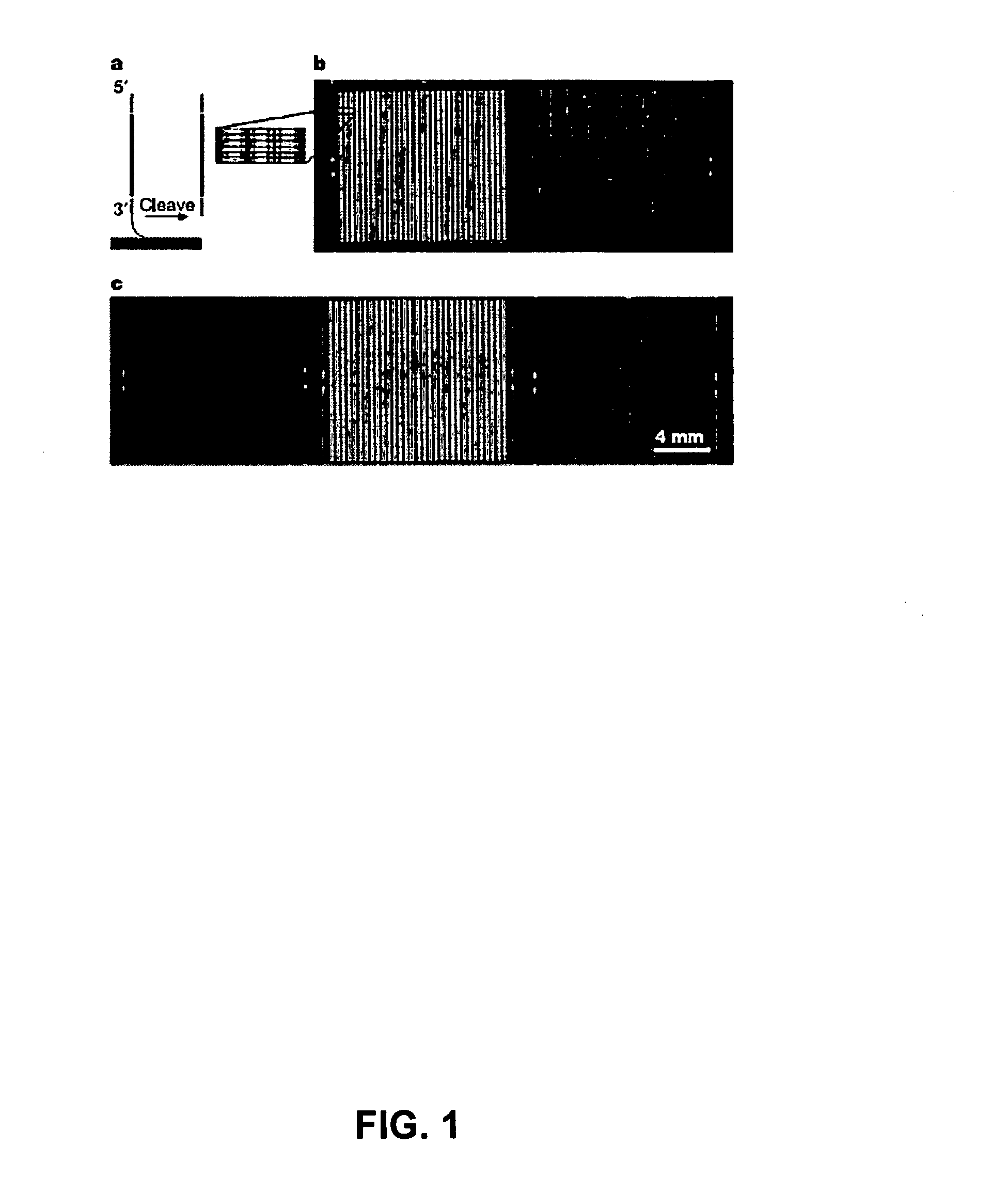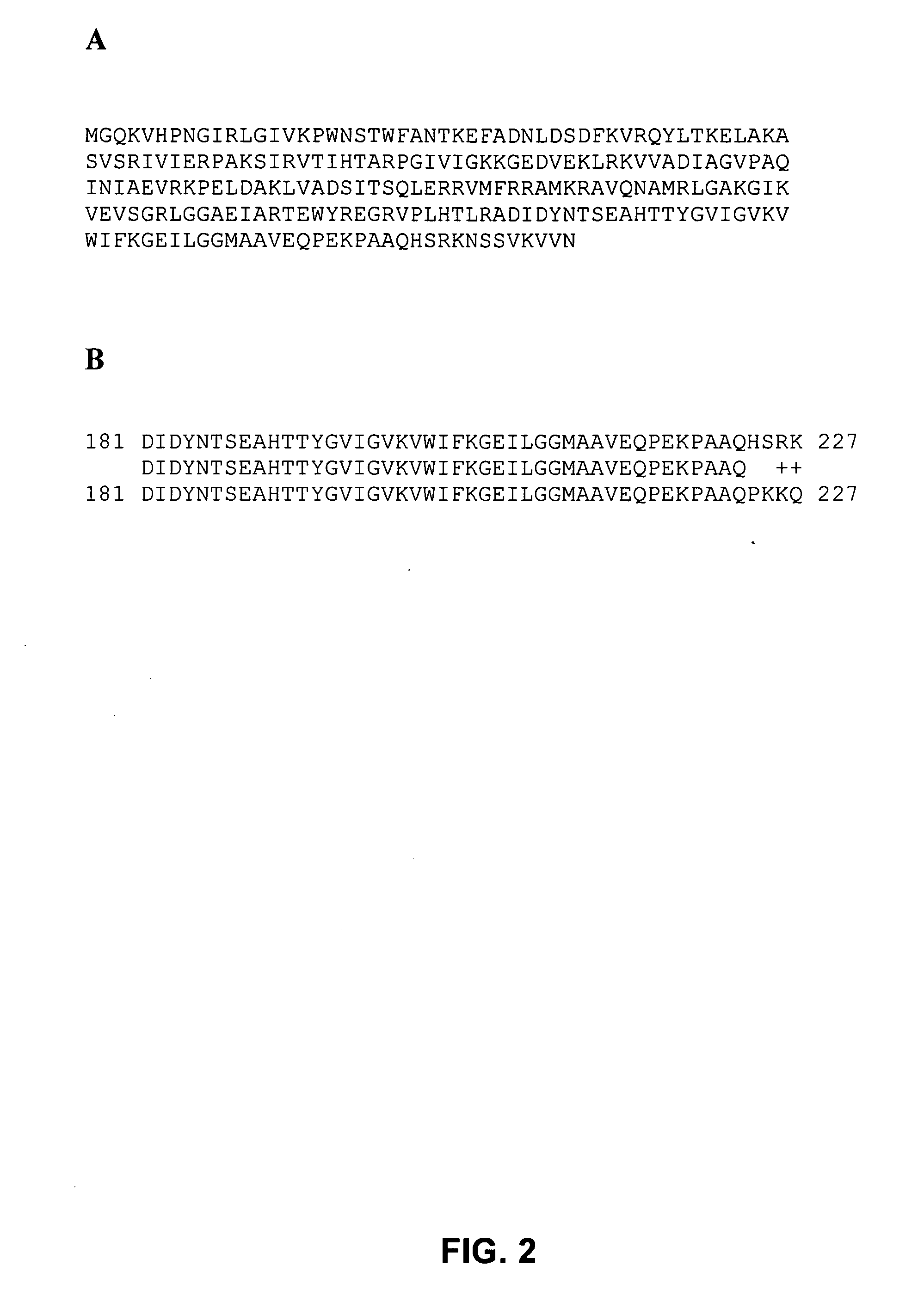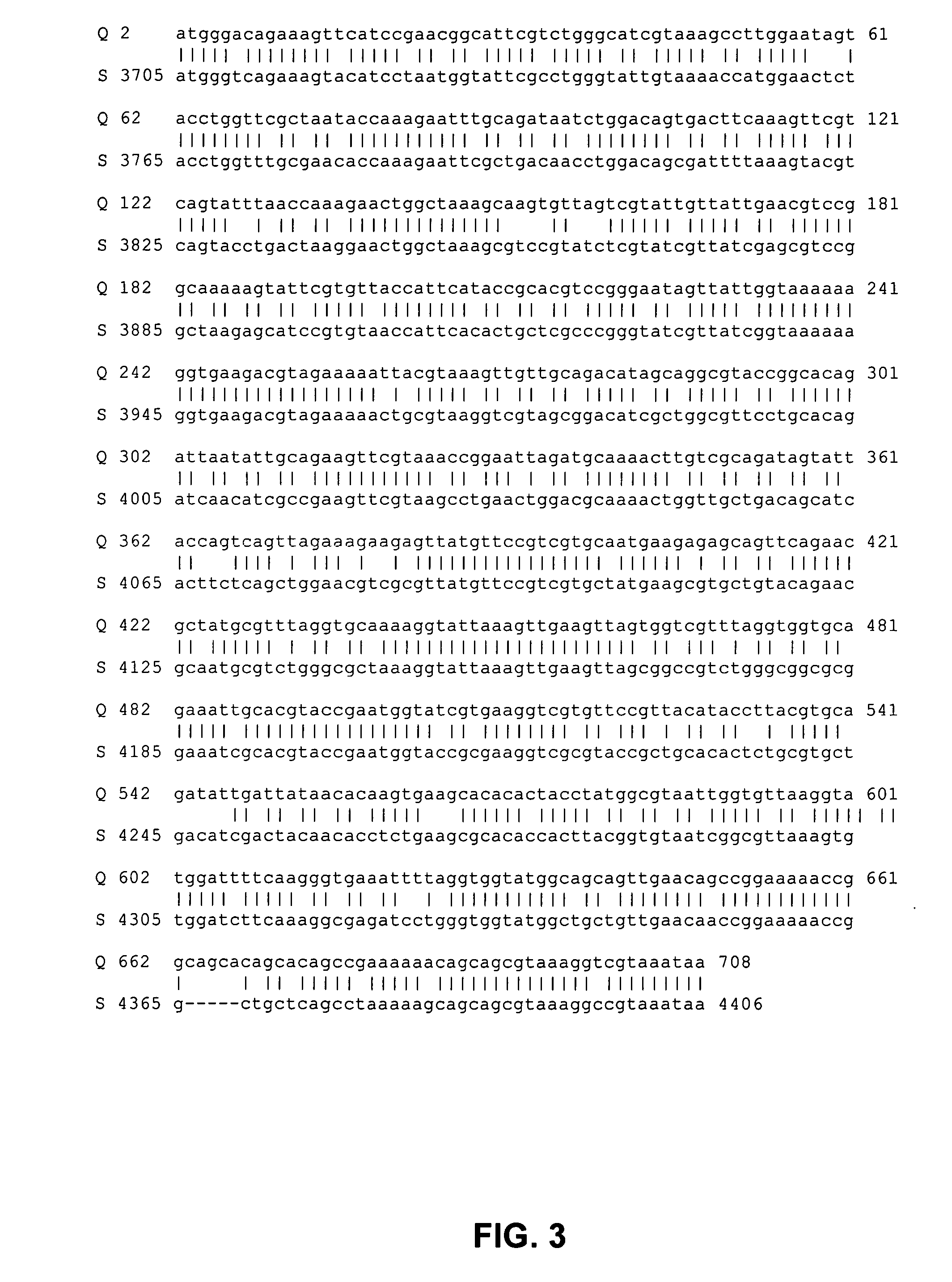Polynucleotide synthesis
a polynucleotide and polynucleotide technology, applied in biochemical apparatus and processes, specific use bioreactors/fermenters, after-treatment of biomass, etc., can solve the problems of high cost, high error rate, and difficulty in generating even simple oligonucleotides,
- Summary
- Abstract
- Description
- Claims
- Application Information
AI Technical Summary
Benefits of technology
Problems solved by technology
Method used
Image
Examples
example i
Pre-Amplification
[0240] One or more oligonucleotides could be flanked by “temporary-tags” or “amplification sites” (e.g., universal temporary-tags, or universal amplification sites) that could be 5 to 30 bases long and / or could be lengthened during amplification cycles by having longer primers complementary to the tags at their 3′ ends. The primers would have 3′ terminal labile nucleotides, e.g. purines alkylated at their N7 position (N7me-dGTP). These would be heat labile and / or light labile and would last only a few rounds of PCR. When released or damaged, the next round of polymerase action would terminate at or near that position such that a “long-primer” appropriate for priming on an oligo or extended oligo (which is adjacent in the desired final sequence) is generated. Without intending to be bound by theory, this should work even if the chosen template is still flanked by temporary-tags. The very terminal tags are not labile and hence dominate in the final rounds. One way to...
example ii
Recursive PCR Assembly Using Type-IIS Restriction Sites
[0242] Recursive PCR assembly of 38 pre-amplified 40-mers selected from a pool of 516 70-mers on a Xeotron-type chip, 14 to 28 base pair overlap. The two IIS enzymes chosen were:
5′ . . . G G T C T C (N)1e,cir . . . 3′BsaI3′ . . . C C A G A G (N)5e,cir . . . 5′5′ . . . A C C T G C (N)4e,cir . . . 3′BfuAI3′ . . . T G G A C G (N)8e,cir . . . 5′
The strategy is set forth in Example IX.
example iii
Use of the Same 7-mer Tag on Both Ends of A 44-mer (A 30-mer After Release)
[0243] Universal temp-primer: 5′ tagtaga 3′ (3′ underlined base is easily cleavable)
[0244] The temp-PCR product from rs1-1 is:
(SEQ ID NO:64)5′ tagtagaTAAACAGGAAGATGCAAATTTTAGTAATAtctatcta 3′(SEQ ID NO:65)3′ atcatctATTTGTCCTTCTACGTTTAAAATCATTATagatagat 5′
[0245] After cleavage at the lower strand's special base and extension with the 7-mer we obtain the ss-37-mer below:
5′ tagtagaTAAACAGGAAGATGCAAATTTTAGTAATAA 3′(SEQ ID NO:66) |||||||3′ atcatctCATTATTAACGTTACCGTCTTCGTAAATTTCagatagat 5′(SEQ ID NO:67)
which will pair with an overlapping 43-mer above (30-non-tag bases).
[0246] Two extensions later, the following ds-68-mer (54 non-tag bases) is generated:
(SEQ ID NO:68)5′ tagtagaTAAACAGGAAGATGCAAATTTTAGTAATAATGCAATGGCAGAAGCATTTAAAGtctatcta(SEQ ID NO:69)3″ atcatctATTTGTCCTTCTACGTTTAAAATCATTATTACGTTACCGTCTTCGTAAATTTCagatagat
PUM
 Login to View More
Login to View More Abstract
Description
Claims
Application Information
 Login to View More
Login to View More - R&D
- Intellectual Property
- Life Sciences
- Materials
- Tech Scout
- Unparalleled Data Quality
- Higher Quality Content
- 60% Fewer Hallucinations
Browse by: Latest US Patents, China's latest patents, Technical Efficacy Thesaurus, Application Domain, Technology Topic, Popular Technical Reports.
© 2025 PatSnap. All rights reserved.Legal|Privacy policy|Modern Slavery Act Transparency Statement|Sitemap|About US| Contact US: help@patsnap.com



